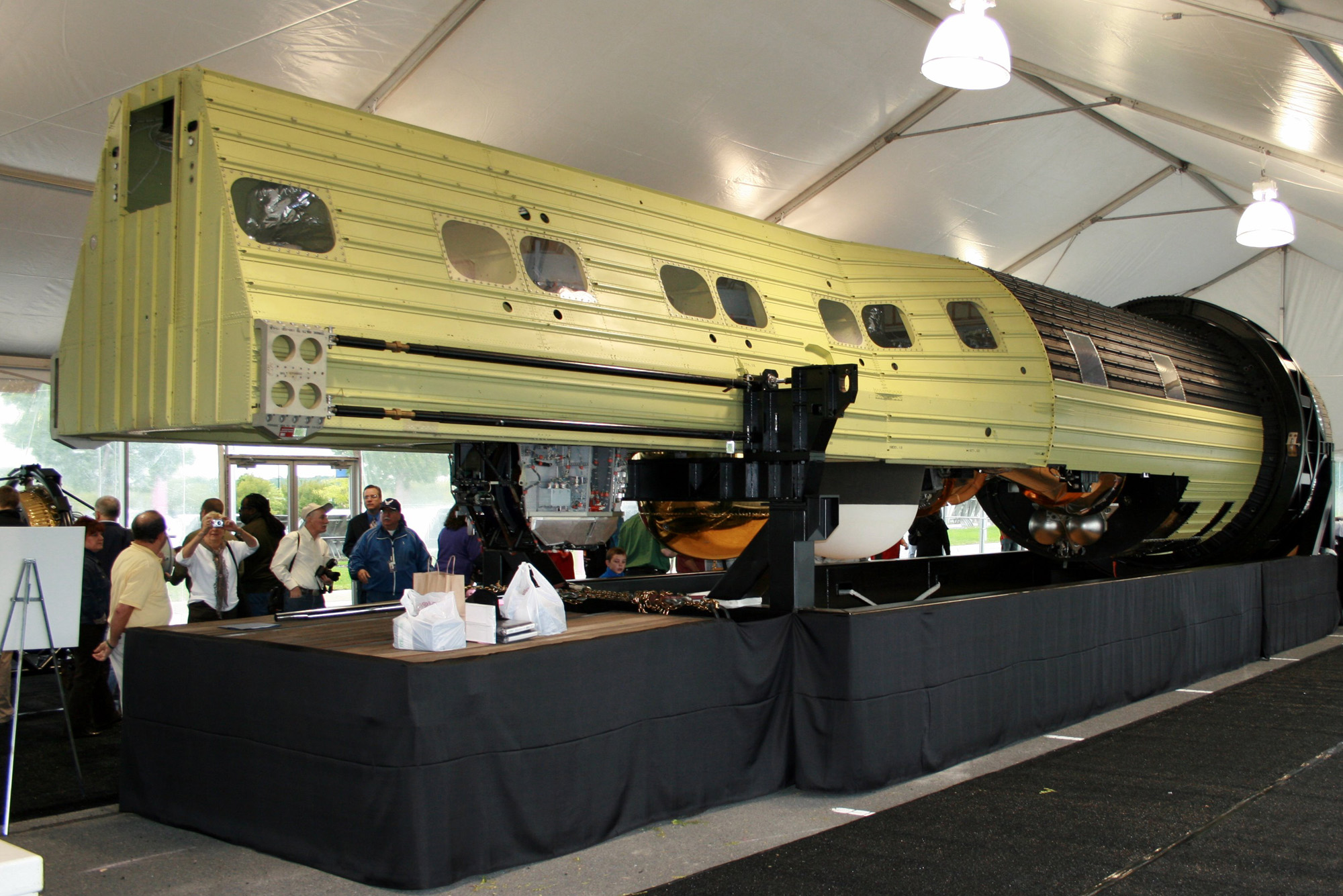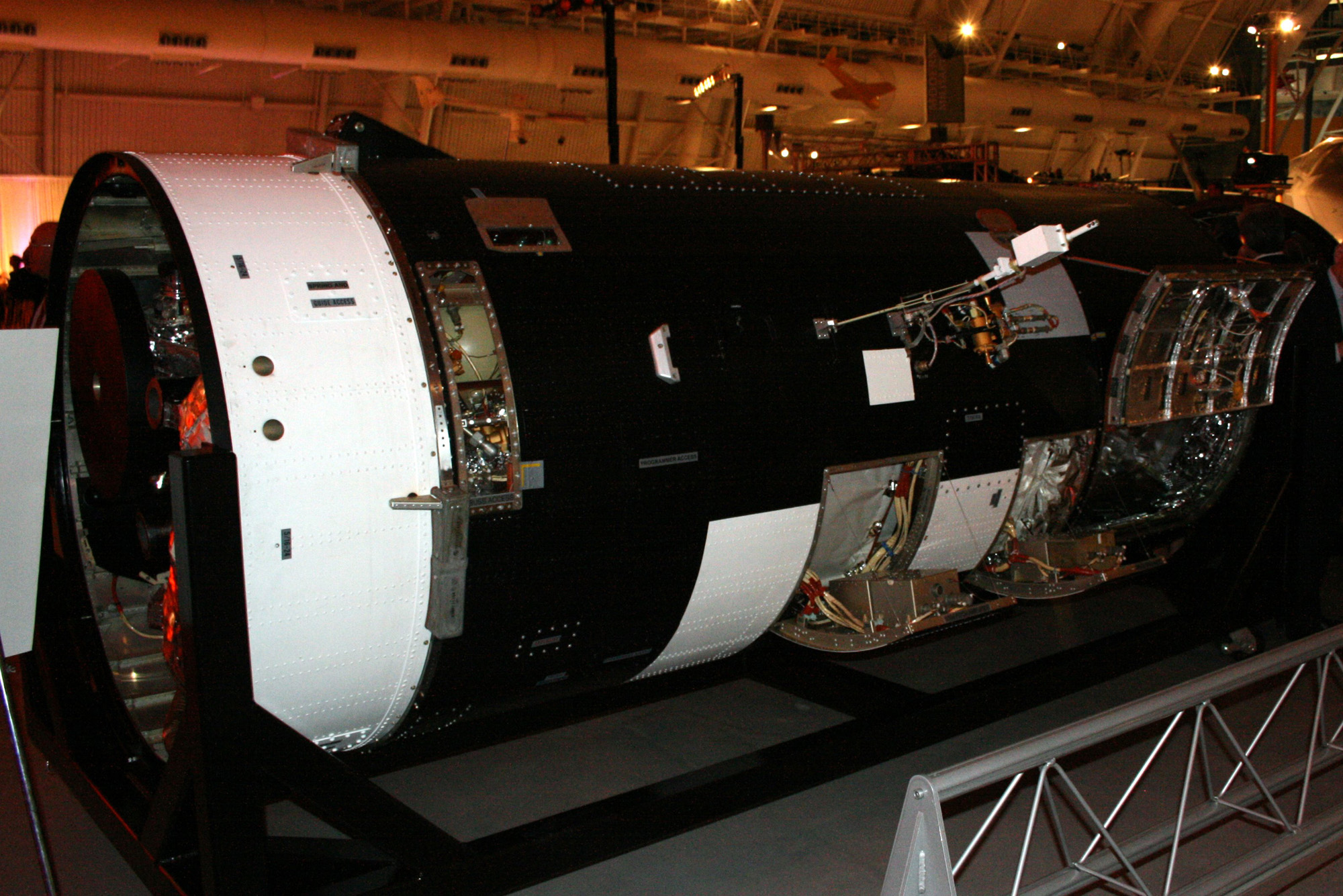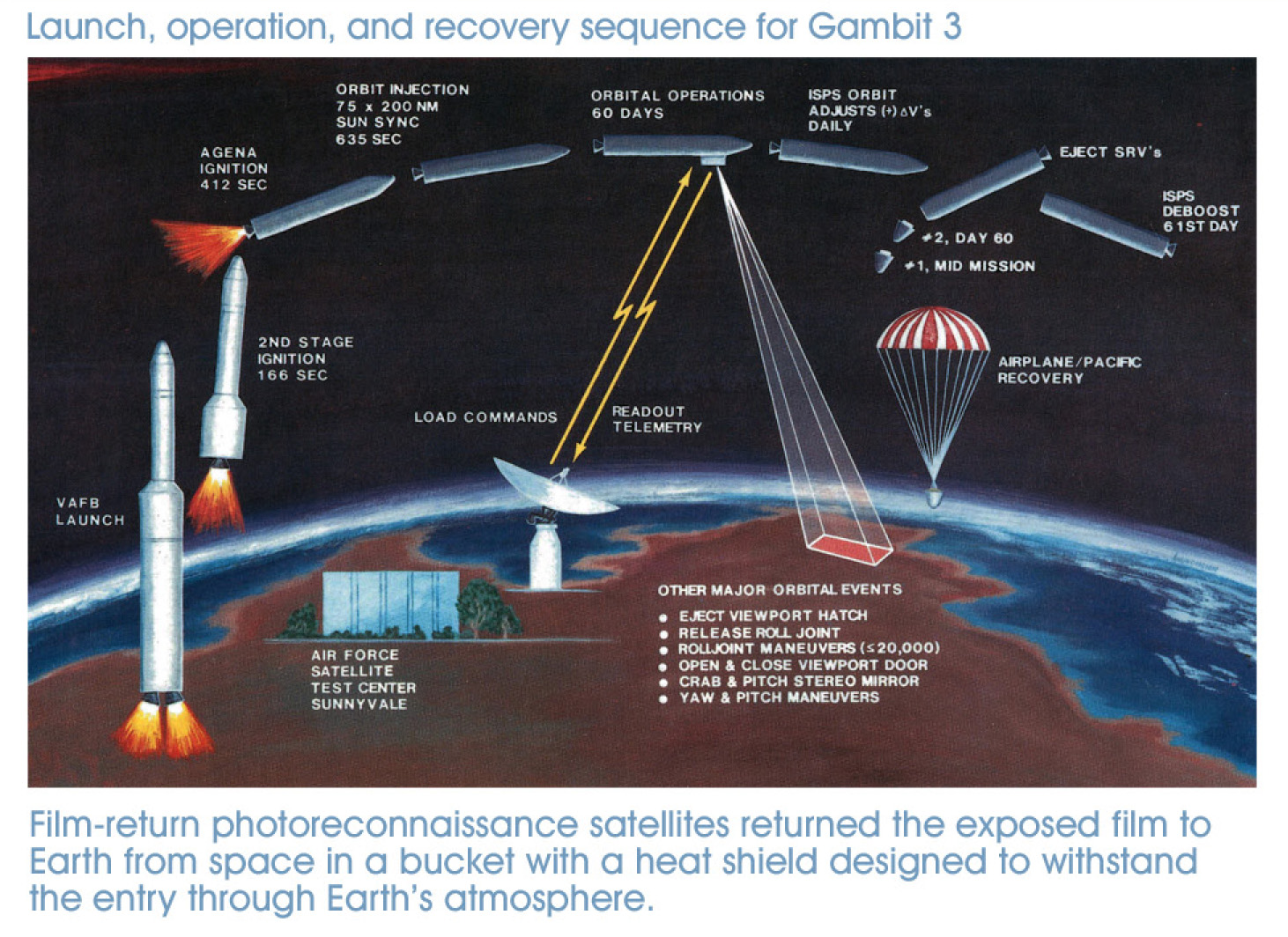Declassified US Spy Satellites Reveal Rare Look at Secret Cold War Space Program

This story was updated on Sept. 18 at 2:45 p.m. ET.
CHANTILLY, Va. – Twenty-five years after their top-secret, Cold War-era missions ended, two clandestine American satellite programs were declassified Saturday (Sept. 17) with the unveiling of three of the United States' most closely guarded assets: the KH-7 GAMBIT, the KH-8 GAMBIT 3 and the KH-9 HEXAGON spy satellites.
The vintage National Reconnaissance Office satellites were displayed to the public Saturday in a one-day-only exhibit at the Smithsonian National Air and Space Museum's Udvar-Hazy Center at Dulles Airport, Va. The three spacecraft were the centerpiece of the NRO's invitation-only, 50th Anniversary Gala celebration held at the center last evening.
Saturday's spysat unveiling was attended by a number of jubilant NRO veterans who developed and refined the classified spacecraft and its components for decades in secret, finally able to show their wives and families what they actually did 'at the office' for so many years. Both of the newly declassified satellite systems, GAMBIT and HEXAGON, followed the U.S. military's frontrunner spy satellite system CORONA, which was declassified in 1995. [See photos of the declassified U.S. spy satellites]
Big spy satellites revealed
The KH-9 HEXAGON, often referred to by its popular nickname "Big Bird," lived up to its legendary expectations. As large as a school bus, the KH-9 HEXAGON carried 60 miles of high resolution photographic film for space surveillance missions.
Military space historian Dwayne A. Day was exuberant after his first look at the KH-9 HEXAGON.
Breaking space news, the latest updates on rocket launches, skywatching events and more!
"This was some bad-ass technology," Day told SPACE.com. "The Russians didn't have anything like it."
Day, co-editor of "Eye in the Sky: The Story of the CoronaSpy Satellites," noted that "it took the Soviets on average five to 10 years to catch up during the Cold War, and in many cases they never really matched American capabilities."
Phil Pressel, designer of the HEXAGON's panoramic 'optical bar' imaging cameras, agreed with Day's assessment.
"This is still the most complicated system we've ever put into orbit …Period."
The HEXAGON's twin optical bar panoramic mirror cameras rotated as the swept back and forth as the satellite flew over Earth, a process that intelligence officials referred to as "mowing the lawn."
Each 6-inch wide frame of HEXAGON film capturing a wide swath of terrain covering 370 nautical miles — the distance from Cincinnati to Washington — on each pass over the former Soviet Union and China. The satellites had a resolution of about 2 to 3 feet (0.6 to nearly 1 meter), according to the NRO. [10 Ways the Government Watches You]
According to documents released by the NRO, each HEXAGON satellite mission lasted about 124 days, with the satellite launching four film return capsules that could send its photos back to Earth. An aircraft would catch the return capsule in mid-air by snagging its parachute following the canister's re-entry.
In a fascinating footnote, the film bucket from the first KH-9 HEXAGON sank to the bottom of the Pacific Ocean in spring 1972 after Air Force recovery aircraft failed to snag the bucket's parachute.
The film inside the protective bucket reported contained high resolution photographs of the Soviet Union's submarine bases and missile silos. In a daredevil feat of clandestine ingenuity, the U.S. Navy's Deep Submergence Vehicle Trieste II succeeded in grasping the bucket from a depth of 3 miles below the ocean.
Hubble vs. HEXAGON
Former International Space Station flight controller Rob Landis, now technical manager in the advanced projects office at NASA's Wallops Flight Facility in Virginia, drove more than three hours to see the veil lifted from these legendary spacecraft.
Landis, who also worked on NASA's Hubble Space Telescope program, noticed some distinct similarities between Hubble and the huge KH-9 HEXAGON reconnaissance satellite.
"I see a lot of Hubble heritage in this spacecraft, most notably in terms of spacecraft size," Landis said. "Once the space shuttle design was settled upon, the design of Hubble — at the time it was called the Large Space Telescope — was set upon. I can imagine that there may have been a convergence or confluence of the designs. The Hubble’s primary mirror is 2.4 meters [7.9 feet] in diameter and the spacecraft is 14 feet in diameter. Both vehicles (KH-9 and Hubble) would fit into the shuttle's cargo bay lengthwise, the KH-9 being longer than Hubble [60 feet]; both would also fit on a Titan-class launch vehicle."
The 'convergence or confluence' theory was confirmed later in the day by a former spacecraft designer, who declined to be named but is familiar with both programs, who confided unequivocally: "The space shuttle's payload bay was sized to accommodate the KH-9." [Infographic: NASA's Space Shuttle from Top to Bottom]
The NRO launched 20 KH-9 HEXAGON satellites from California's Vandenberg AFB from June 1971 to April 1986.
The HEXAGON's final launch in April 1986 — just months after the space shuttle Challenger explosion — also met with disaster as the spy satellite's Titan 34D booster erupted into a massive fireball just seconds after liftoff, crippling the NRO's orbital reconnaissance capabilities for many months.
The spy satellite GAMBIT
Before the first HEXAGON spy satellite systems ever launched, the NRO's GAMBIT series of reconnaissance craft flew several space missions aimed at providing surveillance over specific targets around the world.
The satellite program's initial system, GAMBIT 1, first launched in 1963 carrying a KH-7 camera system that included a "77-inch focal length camera for providing specific information on scientific and technical capabilities that threatened the nation," according to an NRO description. A second GAMBIT satellite system, which first launched aboard GAMBIT 3 in 1966, included a175-inch focal length camera. [Related: Anatomy of a Spy Satellite]
The GAMBIT 1 series satellite has a resolution similar to the HEXAGON series, about 2 to 3 feet, but the follow-up GAMBIT 3 system had an improved resolution of better than 2 feet, NRO documents reveal.
The GAMBIT satellite program was active from July 1963 to April 1984. Both satellites were huge and launched out of Vandenberg Air Force Base.
The satellite series' initial version was 15 feet (4.5 m) long and 5 feet (1.5 m) wide, and weighed about 1,154 pounds (523 kilograms). The GAMBIT 3 satellite was the same width but longer, stretching nearly 29 feet (9 m) long, not counting its Agena D rocket upper stage. It weighed about 4,130 pounds (1,873 kg).
Unlike the follow-up HEXAGON satellites, the GAMBIT series were designed for extremely short missions.
The GAMBIT 1 craft had an average mission life of about 6 1/2 days. A total of 38 missions were launched, though 10 of them were deemed failures, according to NRO documents.
The GAMBIT 3 series satellites had missions that averaged about 31 days. In all, 54 of the satellites were launched, with four failures recorded.
Like the CORONA and HEXAGON programs, the GAMBIT series of satellites returned their film to Earth in re-entry capsules that were then snatched up by recovery aircraft. GAMBIT 1 carried about 3,000 feet (914 meters) of film, while GAMBIT 3 was packed with 12,241 feet (3,731 meters) of film, NRO records show.
The behemoth HEXAGON was launched with 60 miles (320,000 feet) of film!
HEXAGON and GAMBIT 3 team up
During a media briefing, NRO officials confirmed to SPACE.com that the KH-8 GAMBIT 3 and KH-9 HEXAGON were later operated in tandem, teaming-up to photograph areas of military significance in both the former Soviet Union and China.
The KH-9 would image a wide swath of terrain, later scrutinized by imagery analysts on the ground for so-called ‘targets of opportunity.' Once these potential targets were identified, a KH-8 would then be maneuvered to photograph the location in much higher resolution.
"During the era of these satellites — the GAMBIT and the HEXAGON — there was a Director of Central Intelligence committee known as the 'Committee on Imagery Requirements and Exploitation' that was responsible for that type of planning," confirmed the NRO's Robert McDonald, Director of the Center for the Study of National Reconnaissance.
NASA's Rob Landis was both blunt and philosophical in his emotions over the declassification of the GAMBIT and HEXAGON programs.
"You have to give credit to leaders like President Eisenhower who had the vision to initiate reconnaissance spacecraft, beginning with the CORONA and Discoverer programs," Landis said. "He was of the generation who wanted no more surprises, no more Pearl Harbors."
"Frankly, I think that GAMBIT and HEXAGON helped prevent World War III."
Editor's note: This story was updated on Sept. 19 to correct the name of Phil Pressel, who designed the HEXAGON spy satellite camera system.
Follow SPACE.com for the latest in space science and exploration news on Twitter @Spacedotcom and on Facebook.

Roger has been a Space.com correspondent since 2001, covering human spaceflight and military/intelligence space programs. He has witnessed close to 100 piloted spaceflight launches - from the July 1975 Saturn 1B launch of the Apollo-Soyuz Test Project to the final launch of Shuttle Atlantis on STS-135 in July 2011. His live coverage of the Space Shuttle Columbia disaster was cited as a key factor in Space.com receiving the 2003 Online Journalism Award for Breaking News. Prior to joining Space.com, Roger was Editor/Producer and space reporter for Florida Today’s pioneering 'Space Online' website. He is a graduate of Roger Williams University and lives in Little Compton, Rhode Island.





